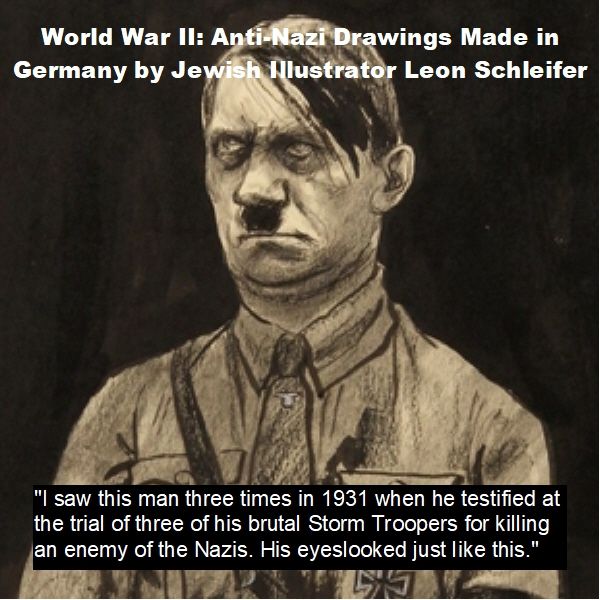
WWII: Anti-Nazi Art by Jewish Illustrator Leon Schleifer
$19.50
Description
Leon Schleifer: Satirist of the Nazi Regime
- 1900: Leon Schleifer (later William Sharp) is born in Lemberg, Austria (now part of Ukraine).
- 1918: Leon Schleifer finishes his studies at the University in Berlin. After serving briefly in the German army at the end of World War I, he remains in Berlin, working as a book illustrator, painter, etcher, and lithographer.
- Late 1920s: As the National Socialist Party gains power, Leon Schleifer (under various pseudonyms) begins drawing political cartoons satirizing Adolf Hitler and the Nazis for the anti-Nazi press.
- 1929 – 1934: Leon Schleifer creates 181 illustrations and 57 description sheets depicting scenes from Germany, including Nazi atrocities, the German court system, Hitler Youth, and censorship. These drawings satirize Hitler, Hermann Goering, Heinrich Himmler, Joseph Goebbels, and Dietrich Eckart.
- 1933: Leon Schleifer completes a sketch of Hermann Goering in Germany, a risky act given Goering’s powerful position as President of the Reichstag and his reputation for cruelty.
- Before 1934: Joseph Goebbels, angered by Schleifer’s anti-Nazi drawings, threatens him with a concentration camp after Schleifer’s identity is discovered by the Nazis.
- 1934: Leon Schleifer and his wife, Ruth, flee Germany to the United States due to Nazi persecution. They settle in New York, living on 108th Street in Queens.
- 1934: Upon arriving in the U.S., Leon Schleifer changes his name to William Sharp.
- 1934: William Sharp gets his first job in America with the Hearst newspapers syndicate, where he sketches the trial of Bruno Richard Hauptmann, accused of kidnapping and murdering Charles Lindbergh’s infant son.
- 1934 onwards: William Sharp continues his career as a book illustrator and works for various publications including Life, The New York Post, The Daily Mirror, PM, and The New York Times Magazine.
- 1940: PM, a daily New York newspaper, publicizes drawings from the sketchbook that William Sharp (Leon Schleifer) smuggled out of Nazi Germany. These drawings feature illustrations of Hitler, Goering, Himmler, Goebbels, Eckart, Nazi atrocities, the German court system, Hitler Youth, and censorship.
- October 21, 1941: An article in PM newspaper quotes Leon Schleifer (William Sharp) discussing the origins and nature of his anti-Nazi drawings, stating they were based on witnessed scenes and reliable accounts.
- 1961: Leon Schleifer (William Sharp) dies.
Cast of Characters
- Leon Schleifer (William Sharp): (1900-1961) An Austrian-born Jewish illustrator, painter, etcher, and lithographer. He studied fine art in Austria, Poland, and Berlin. After World War I, he worked in Berlin. In the late 1920s and early 1930s, he pseudonymously drew political cartoons satirizing Adolf Hitler and the Nazi Party for the anti-Nazi press. He was threatened by Joseph Goebbels for his work. In 1934, he and his wife fled Germany for the U.S., where he changed his name to William Sharp and continued a successful career as an illustrator for major newspapers and magazines.
- Ruth Schleifer (Ruth Sharp): Leon Schleifer’s wife who fled Germany with him in 1934 to the United States.
- Adolf Hitler: Leader of the National Socialist Party and later dictator of Nazi Germany. He is frequently satirized in Leon Schleifer’s anti-Nazi drawings.
- Joseph Goebbels: Reich Minister of Propaganda of Nazi Germany. He was angered by Leon Schleifer’s anti-Nazi drawings and threatened him with a concentration camp.
- Hermann Goering: A prominent German political and military leader in Nazi Germany, described as corpulent and cruel in the sources. He was president of the Reichstag in 1933 and was instrumental in Hitler’s regime. Leon Schleifer made a risky sketch of him in 1933.
- Heinrich Himmler: A powerful leader within the Nazi Party and head of the SS. He is one of the Nazi figures depicted in Schleifer’s drawings.
- Dietrich Eckart: An early key influence on Adolf Hitler and a prominent figure in the early Nazi Party. He is also featured in Schleifer’s illustrations.
- Bruno Richard Hauptmann: The man accused of kidnapping and murdering Charles Lindbergh’s infant son, whose 1934 trial was sketched by William Sharp for the Hearst newspapers syndicate.
- Harold Shachner: A collector whose collection, along with Mrs. William Sharp’s, contributed to the source material for the “World War II: Anti-Nazi Drawings Made in Germany by Jewish Illustrator Leon Schleifer” compilation.
- Mrs. William Sharp: Leon Schleifer’s wife, Ruth, who contributed to the source material for the “World War II: Anti-Nazi Drawings Made in Germany by Jewish Illustrator Leon Schleifer” compilation, likely through her preservation of his work.
Leon Schleifer’s Anti-Nazi Art – Drawn in Wartime Germany
During World War II, a Jewish artist named Leon Schleifer created anti-Nazi illustrations within Germany.
This collection comprises 181 illustrations along with 57 explanatory pages, all depicting German scenes from 1929 to 1934. They were produced by Leon Schleifer, an Austrian-born Jewish individual who, using various assumed names, mocked Hitler and his supporters during their ascent to political authority. “These are the visual artworks, comprising both sketches and finished drawings, that I managed to take out of Germany in 1934.
Their creation stemmed from events I observed firsthand, as well as narratives provided by credible sources. They depict the state of affairs in Germany when Hitler dispatched his ‘street conquerors,’ the Storm Troopers, who engaged in fatal beatings, tramplings, and shootings of individuals. Furthermore, after his assumption of power, I brought some images out of the country only as preliminary sketches, fearing to complete them,” shared Leon Schleifer, also known as William Sharp, in the October 21, 1941 edition of PM Newspaper.
Leon Schleifer, later known as William Sharp, lived from 1900 to 1961 and was born in Lemberg, Austria, a city now located in Ukraine. His artistic education began in Austria and Poland, culminating in the completion of his university studies in Berlin in 1918. Following a short period of service in the German military at the conclusion of the First World War, he remained in Berlin, where he pursued a career as an illustrator for books, a painter, an etcher, and a lithographer.
By the late 1920s, during the expansion of Adolph Hitler’s National Socialist Party, Sharp began creating satirical political cartoons targeting the party and its leader, publishing them in anti-Nazi newspapers using different aliases. His sharp satirical commentary provoked the ire of the Nazi leadership. “Goebbels, who served as the Reich Minister of Propaganda for Nazi Germany, stands out as one of the most vengeful individuals I have encountered. He issued a threat of sending me to a concentration camp because of the anti-Nazi illustrations I produced anonymously,” recounted Schleifer, also identified as Sharp.
Once the Nazis discovered his true identity in 1934, he and his spouse, Ruth, escaped Germany and sought refuge in the United States. The Schleifer family established their new home in New York City, residing at 108th Street in the borough of Queens. Schleifer subsequently adopted the name William Sharp. Sharp secured his initial American employment with the Hearst newspaper syndicate, where he produced sketches of the 1934 trial concerning Bruno Richard Hauptmann, who was indicted for the abduction and homicide of Charles Lindbergh’s baby. Subsequently, he contributed his artistic talents to publications such as Life, The New York Post, The Daily Mirror, PM, and The New York Times Magazine, in addition to maintaining a successful career illustrating books.
A daily New York newspaper called PM showcased drawings in 1940 that he had secretly brought out of Nazi Germany within a sketchbook. These featured numerous illustrations he created, portraying figures like Hitler, Hermann Goering, Heinrich Himmler, Goebbels, and Dietrich Eckart, as well as Nazi cruelties, the German judiciary, the Hitler Youth, and acts of censorship. Accompanying this compilation are Sharp’s explanatory notes and insights concerning dozens of his illustrations, which he conveyed to PM.
Regarding a piercing illustration he produced of the corpulent German political and military figure Hermann Goering, Sharp remarked, “Regardless of how amusing one might have found the stout Hermann Goering and his various uniforms, outright laughter was universally suppressed. I finished this drawing in Germany in 1933, an act fraught with peril given the Nazis’ firm grip on power and Goering’s position as President of the Reichstag.”The whip he carries is more than just an accessory; Goering is counted among Germany’s most exceptionally ruthless individuals. It was he who issued the directive for the medieval axe to be utilized for capital punishment. He provided substantial support to Hitler.






Related products
-
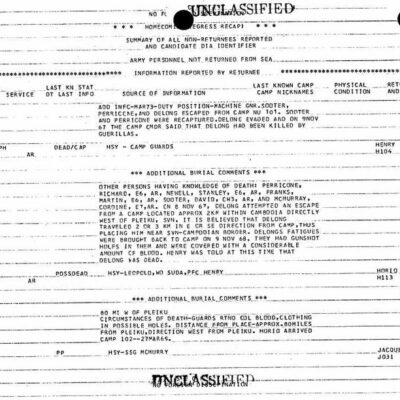
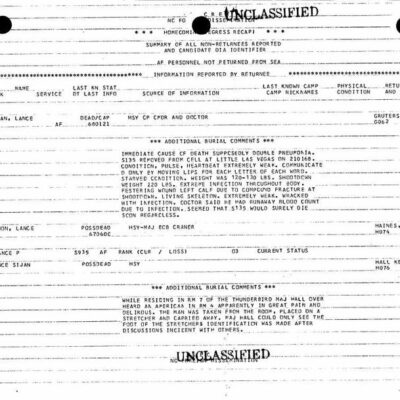
Vietnam War: POW/MIA Summary of All Reported Non-Returnees
$19.50 Add to Cart -

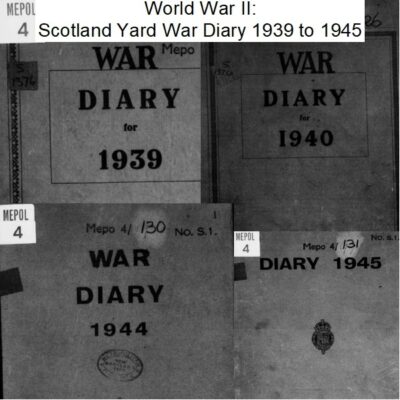
World War II: Scotland Yard War Diary from 1939 to 1945
$3.94 Add to Cart -


Trial Notes of Ralph G. Albrecht, Prosecutor at the Nuremberg Trials of World War II
$3.94 Add to Cart -
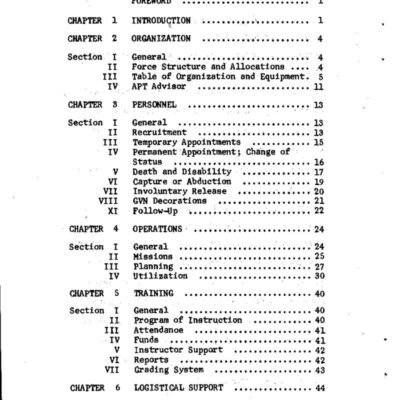

Vietnam War: Armed Propaganda Teams CIA Handbooks
$1.99 Add to Cart